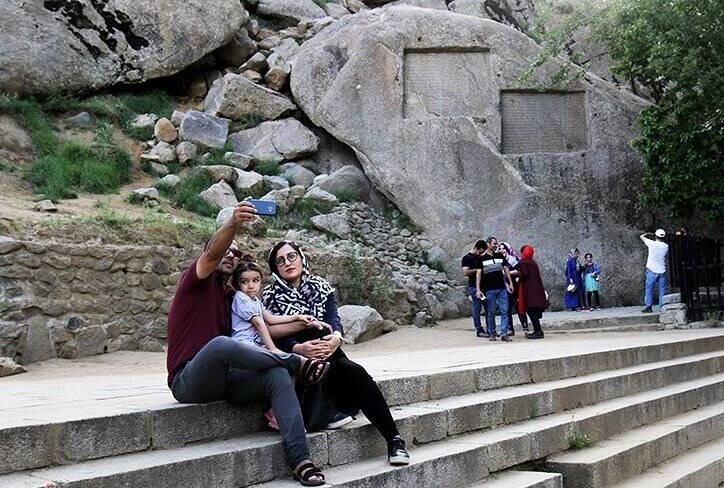Technical committee formed to formulate Ganjnameh protection

TEHRAN—Iran’s tourism ministry has established a technical committee tasked to formulate scientific ways to further protect Ganjnameh from natural and human-made threats.
Located near the ancient city of Hamedan, Ganjnameh, which literally means “Treasure Epistle”, features a set of cuneiform inscriptions written in Old Persian, Elamite, and Babylonian scripts.
“To make an appropriate decision, the technical committee will be examining all possible threats that may harm the Achaemenid inscriptions,” CHTN quoted the provincial tourism chief as saying on Saturday.
“Those 2,500-year-old inscriptions have been registered on the national list for cultural heritage and they are subject to cultural heritage criteria…,” Mohsen Masum-Alizadeh said.
“So, any decision concerning their protection should be made with high sensitivity and no action should be taken outside ratified instructions.”
The official said there are similar examples of Ganjnameh inscriptions all over the country. This work has not been seriously damaged over time due to its type and location, and even weather factors, and it is not subject to damage even now.
The Ministry of Cultural Heritage, Tourism and Handicrafts is sensitive to all historical works, and if we feel that any of them are at risk of damage, we will definitely make the best decision through consultations with experts.
Ganjnameh is a can’t-miss destination when you are traveling to Hamedan. The relaxed ambiance of its site, which is located just a short drive from the city, also opens up an opportunity for hiking on the side of Mount Alvand.
The inscriptions were first studied in detail by the French painter and archaeologist Eugene Flandin, who was accompanied by Pascal Coste, according to orientalarchitecture.com. Following their work, Sir Henry Rawlinson, a British explorer, used the inscriptions as a sort of Rosetta stone to decipher the cuneiform characters of the era. The inscriptions proved to belong to the age of Achaemenid Kings Darius I (521-485 BC) and Xerxes I (485-65 BC).
The right inscription, belonging to Xerxes I, reads: “The Great God [is] Ahuramazda, greatest of all the gods, who created the earth and the sky and the people; who made Xerxes king, and outstanding king as outstanding ruler among innumerable rulers; I [am] the great king Xerxes, king of kings, king of lands with numerous inhabitants, king of this vast kingdom with far-away territories, son of the Achaemenid monarch Darius.”
An adjacent 9-meter-high waterfall becomes a popular ice-climbing spot in wintertime. In contrast, the Alvand summit can be reached as a day trip in summer.
Modern Hamedan largely lies on ancient Ecbatana, which was the capital of Media and subsequently a summer residence of the Achaemenian kings.
Achaemenian Dynasty, also called Achaemenid, Persian Hakhamanishiya, (559–330 BC), was an ancient Iranian dynasty whose kings founded and ruled the Achaemenian Empire. During the time of Darius I and Xerxes I, the empire extended as far west as Macedonia and Libya and as far east as the Hyphasis River; it stretched to the Caucasus Mountains and the Aral Sea in the north and the Persian Gulf and the Arabian Desert in the south.
AFM
